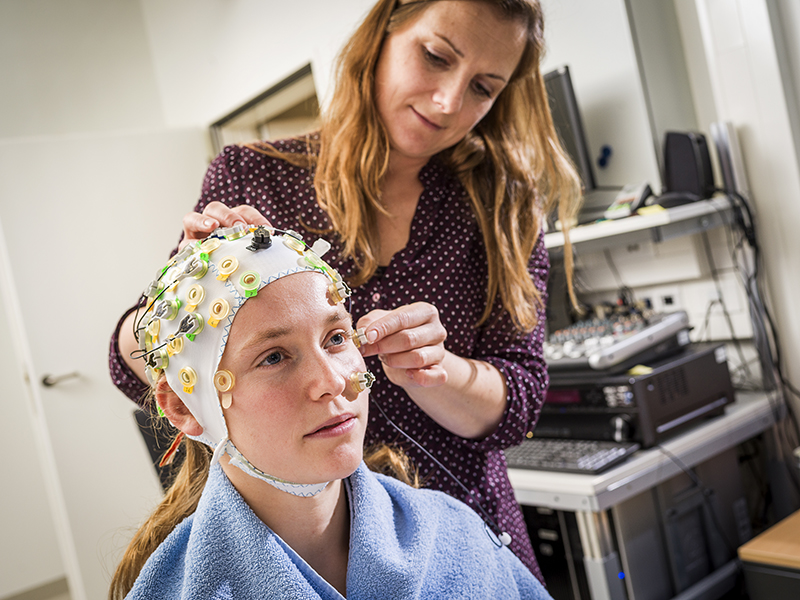The brain uses electrical signals to engage in conversations
Our brain contains many special cells, called neurons. These neurons are responsible for all our thoughts, feelings and actions, including our ability to engage in conversations. The special thing about neurons is that they also “converse” with each other – which looks a little different than how we talk to our friend. Neurons create a sort of a mesh of wires that are arranged throughout the whole brain. They communicate with each other by releasing chemicals, and this produces an electrical charge. This electrical signal travels through the mesh in our brain, just like how electricity travels through electrical wires.
Measuring the electrical signals
One of the most common ways to measure the electrical signals in the brain is by attaching special sensors called “electrodes” to people’s scalp. These can pick up on the activity of the neurons; a method called electroencephalography (EEG).
What can we see on an EEG recording? Each electrode records a signal that looks like a squiggly line going up and down. Certain patterns in the signal mean that the neurons around the electrodes are active and are essentially conversing with one another.

Some participants ask me whether I can tell what they are thinking after putting on the electrodes. The truth is, we can tell very little when we look at these wavy lines without the additional help of computer programs. But there are a couple of things that are clearly visible, even to the naked eye. For example, if a participant blinks, we can see a big bump in the signal of the electrodes that are placed close to the eyes. This is because eye movements are also accompanied with changes in electrical charge. These also appear in the EEG recording together with the brain activity. We can also see if participants are tired. If someone is sleepy, the lines start slowly moving up and down, resulting in about ten waves per second. So if we see these waves during the experiment, we can at least offer a cup of water and a longer break to our participant.
What can we investigate with EEG?
Language scientists are usually not interested in knowing when a participant blinks. So what do they use EEG for? EEG can be used to answer many different questions about language. For instance, researchers might be interested in seeing if certain words sound surprising in a sentence. One way to investigate this is to create an experiment where participants listen to sentences. In some sentences, the last word is expected (“The little girl talked to her mom.”), but in some of them, the last word is definitely not anticipated (“The little girl talked to her cup.”). Researchers found that the EEG signal in some electrodes showed a negative bump about 400 ms after the surprising word in the unexpected sentences. It is quite incredible that listeners can process the meaning of a word in less than a second.

Using these kinds of effects, scientists can also look at whether context affects how we process such surprising words. In a different study, researchers found that sentences with unexpected endings (“The little girl talked to her cup.”), were perceived as less surprising if participants also listened to the context that explained the sentence (“Ever since the little girl watched Beauty and the Beast, she liked to play with odd things.”). In this case, the unexpected sentences that were presented along with the context showed a smaller negative bump in the EEG signal, meaning that context seems to help people integrate surprising words with the rest of the sentence.
Scientists are a long way from figuring out how our brain processes and creates language. Yet, they can use EEG, a method that can pick up the electrical signals, to tell them about how the neurons in our brain communicate with each other. This essentially guides our ability to converse. Eventually, with the help of such methods, scientists can understand how the brain can handle complex conversations.

